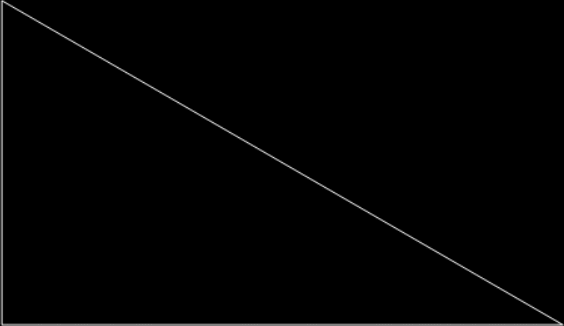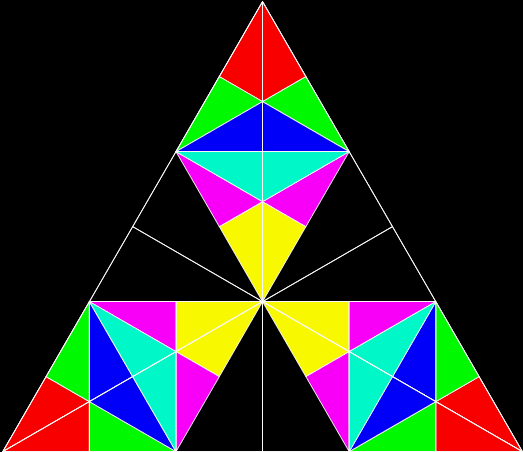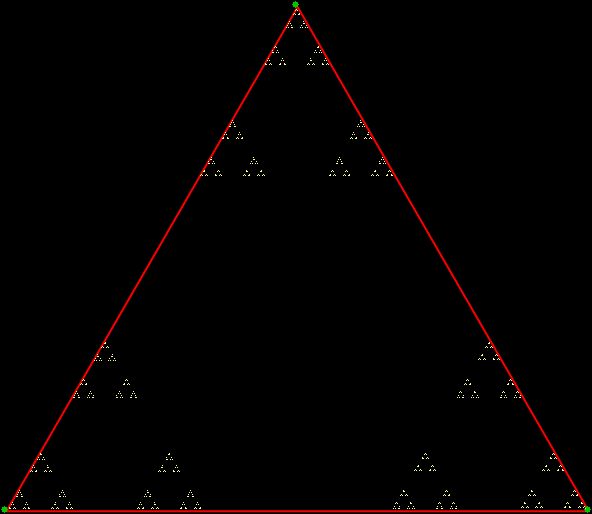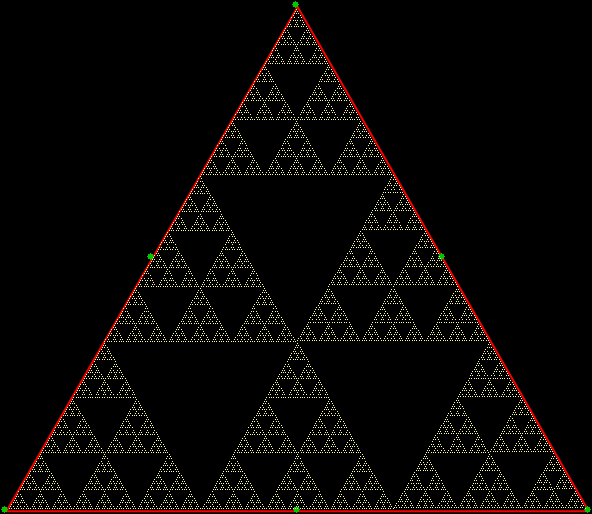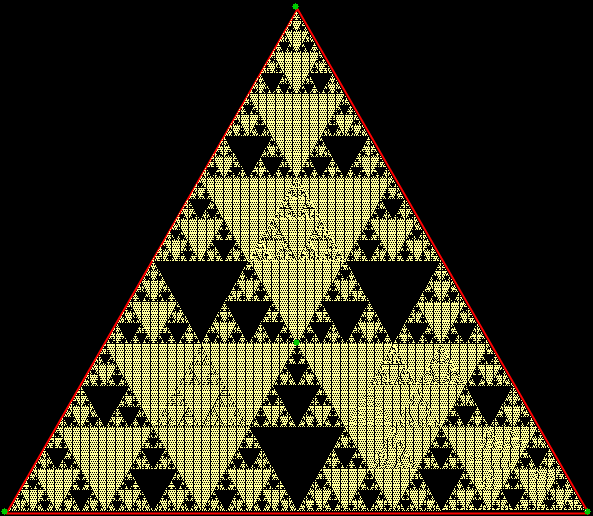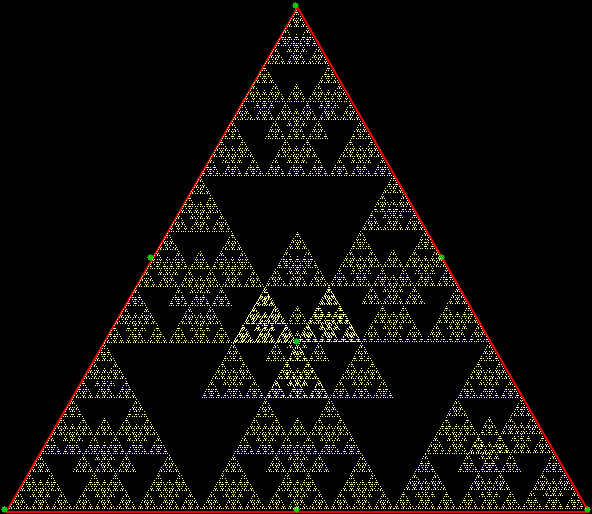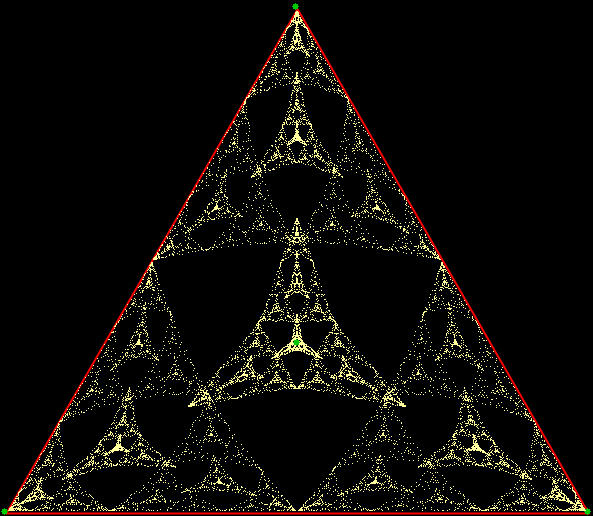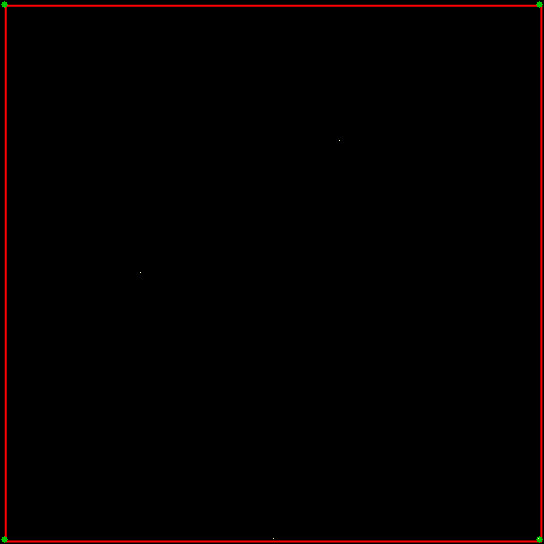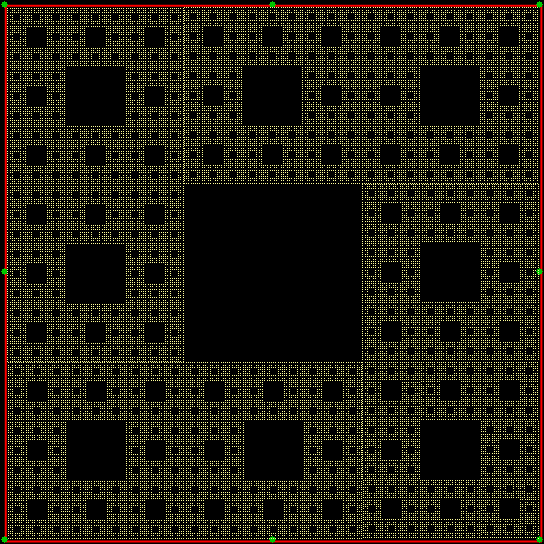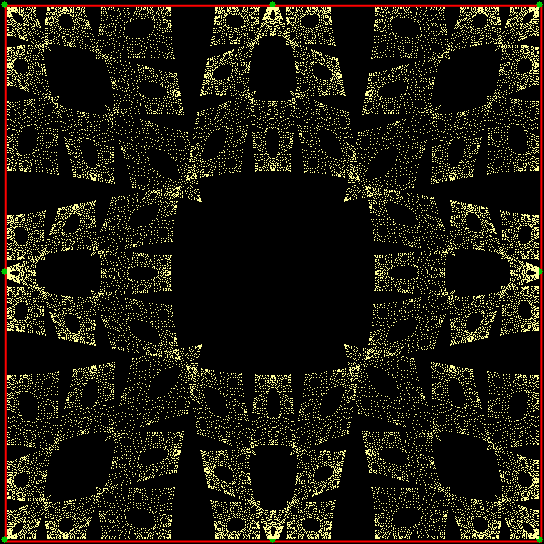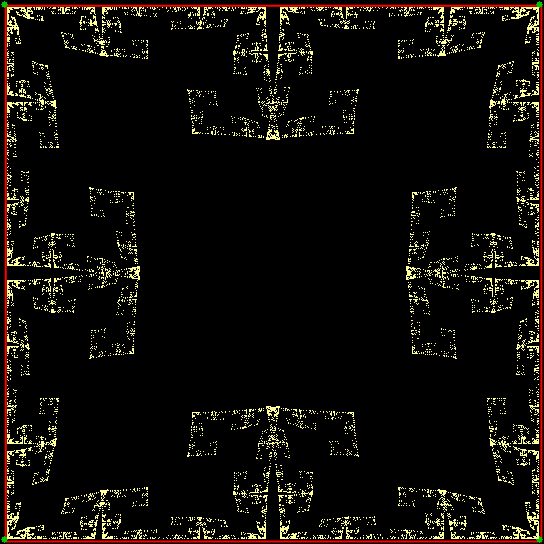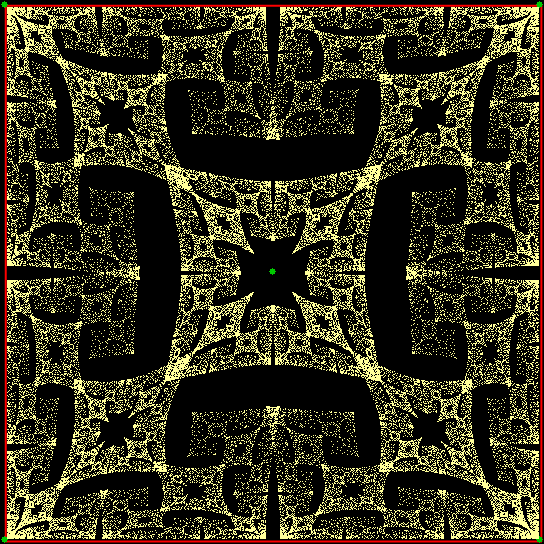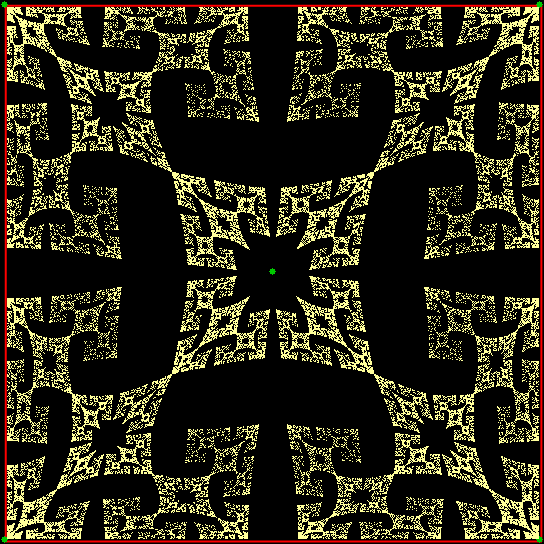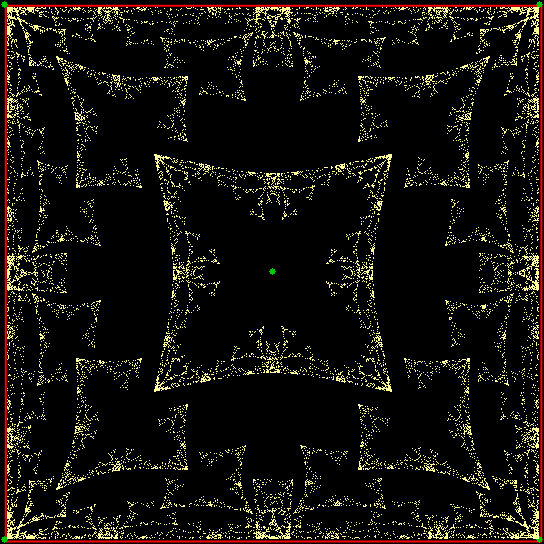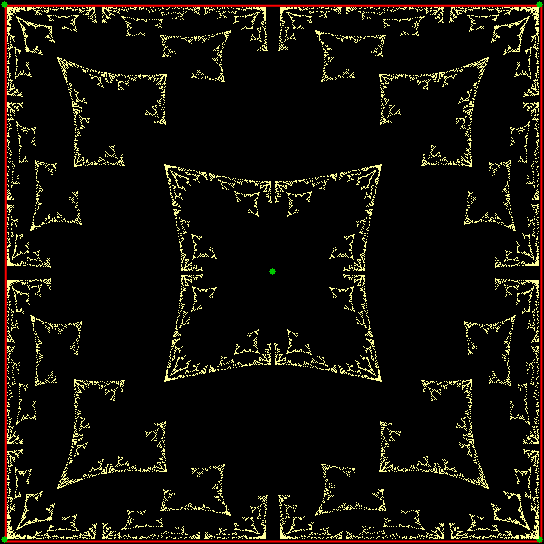Here’s a right triangle, where a^2 + b^2 = c^2. But what are the exact values of a, b, and c?
You might be able to guess by eye, but could you prove your guess? Now try the same right triangle tiled with three identical copies of itself:
1-√3-2 triangle as rep3 rep-tile
Now you can prove the exact values of a, b, and c. If the vertical side, a, is 1, then the hypotenuse, c, is 2, because the length that fits once into a fits twice into c. Therefore 2^2 = 1^2 + b^2 → 4 = 1 + b^2 → 4-1 = b^2 → 3 = b^2 → √3 = b. The horizontal side, b, has a length of √3 = 1.73205080757… So the right triangle is 1-√3-2. And if it’s rep3, that is, can be divided into three identical copies of itself, then it’s also rep9, rep27, and so on:
1-√3-2 triangle as rep9 rep-tile
1-√3-2 triangle as rep27 rep-tile
1-√3-2 triangle as rep81 rep-tile
1-√3-2 triangle as rep243 rep-tile
1-√3-2 triangle as rep729 rep-tile
Once you’ve got a rep-tile, you can create fractals. But the 1-√3-2 triangle is cramped. You need more space to work with. And it’s easy to find that space when you realize that a standard equilateral triangle can be divided into six 1-√3-2 triangles:
Equilateral triangle divided into six 1-√3-2 triangles
Equilateral triangle tiled with 1-√3-2 triangles (stage 1)
(please open in new window if image is distorted)
Equilateral triangle tiled with 1-√3-2 triangles (stage 2)
Equilateral triangle tiled with 1-√3-2 triangles (stage 3)
Here are variant colorings of the stage-3 tiled triangle:
But where are the fractals? In one way, you’ve already seen them. But they get more obvious like this:
Fractal stage 1
Fractal #2
Fractal #3
Fractal #4
Fractal #5
Fractal #6
Fractal #7
Fractal #8
Fractal (animated)
Another fractal stage 1
[…]
↓
[…]
Another fractal #8
Another fractal (animated)
And when you have a fractal created using an equilateral triangle, it’s easy to expand the fractal into a circle, like this:
Original fractal
↓
Fractal expanded into circle
Triangular fractal to circular fractal (animated)

